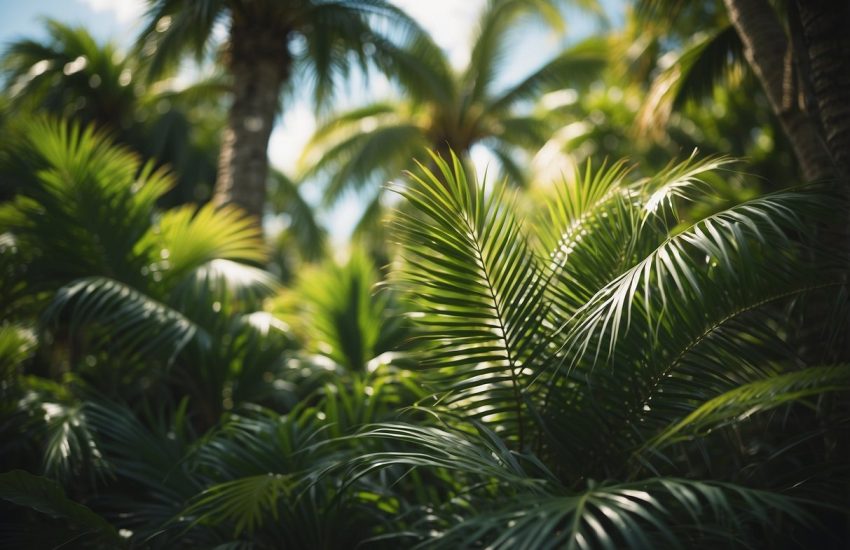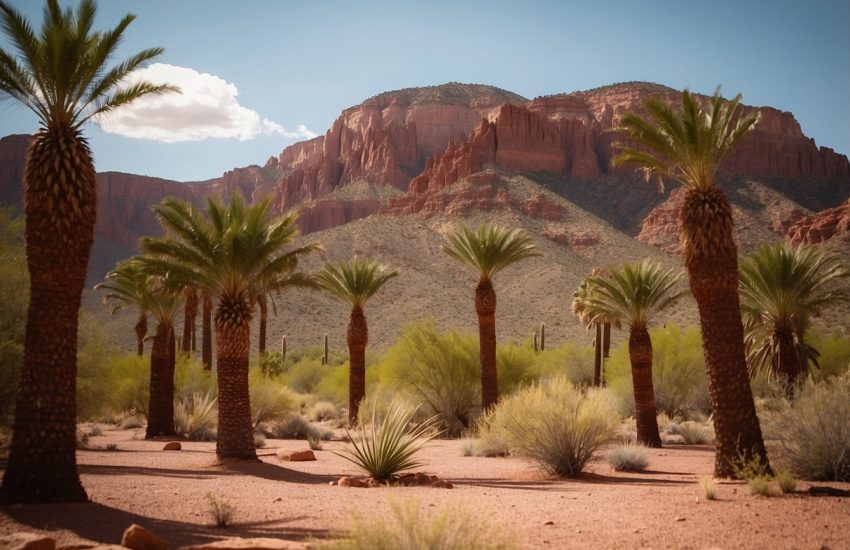6 Best Palm Trees To Grow In South Carolina
There are a number of warm areas in South Carolina that are suitable for growing palm trees. In the humid subtropical climate of the area, the summers are hot and the winters are mild, providing enough sun and heat for a wide variety of palm species to flourish.
Throughout the state of South Carolina, the average July temperature ranges between 89 and 92°F (31-33°C), while the average January temperature ranges between 50 and 59°F (10-15°C).
It is common for tropical cyclones and thunderstorms to be present in this state during the summer months. A piece of snow weighing about one inch (2.5 cm) is collected on average during the winter months.
The state is inundated with thunderstorms 64 days out of the year as well as being threatened by tornadoes on a regular basis.
Temperatures that have been recorded with 111°F (44°C) and –20°F (–29°C) were the warmest and the coldest measurements respectively.
Because South Carolina has USDA hardiness zones ranging from 7a to 9a, you can easily find cold hardy palms that can be grown in both Zones 8 and 9 of the USDA hardiness zones.
It is very likely that you will need some serious acclimation to the cold during the winter months if you plan to grow palms outdoors in zone 7.
Bottle Palm Tree
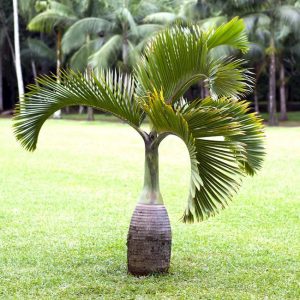
A bottle-shaped palm becomes increasingly mature as it grows. Fronds disappear, and the bottle gets spherical rings.
So you can watch the Bottle Palm become more interesting and beautiful as it ages.
Eventually, the fully grown, stout “bottle” becomes smooth, and just like Buddha’s belly, it doesn’t mind being rubbed for good luck!
The eye-catching tropical accent has a surprising array of features that will immediately appeal to you.
Bottle Palms transform your garden into a tropical oasis of calm and relaxation.
Only four to six fronds of the Bottle palm are produced, which have arched, feather-like leaves. Due to the small number of fronds, the palm won’t compete for space, making it a good choice for busy gardens.
With the right care, the no-nonsense plant rarely needs trimming as long as it is grown above freezing, with water and mulch. For growers who are looking for a low-maintenance paradise, the Bottle Palm is the perfect choice.
Needle Palm Tree
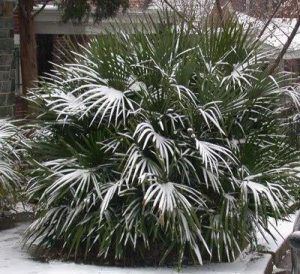
This palm species is rare and extremely desirable when fully grown. Planting it as your front yard centerpiece makes an impressive statement.
The plant grows to impressive heights or you can bring it inside. In addition to being a natural humidifier and air purifier, this palm also acts as a home plant.
The species is excellent at removing carbon monoxide and restoring freshness to the indoor air.
Needle Palms are at home in the sun as well as the shade. In addition to preferring moist, well-draining soil, this species requires little fertilizer.
It also offers the benefit of being naturally resistant to both pests and diseases, which means you do not have to spray any harmful chemicals on it.
Queen Palm
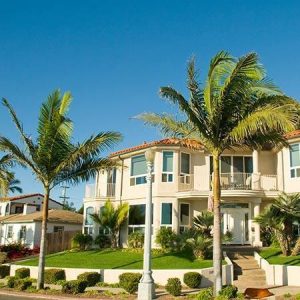
A first glance reveals long, vibrantly green leaf blades and small orange fruit for an exotic appearance.
As accent trees for your garden or around your swimming pool, they are perfect.
In fact, the Queen Palm looks and is exactly like its arching crown: its height and regal silhouette are unsurpassed.
Plant it and watch it flourish! Within no time, the Queen Palm will reach tall heights of 50 feet.
As a matter of fact, they grow tall enough to be seen from across the neighborhood.
As a matter of fact, they grow tall enough to be seen from across the neighborhood.
In fact, they grow tall enough to be seen from across the street. Island-inspired luxe? Absolutely. This low-maintenance, pest resistant, and hassle-free tree will provide generations with a unique look.
The Queen Palm is an undeniably beautiful and unique plant. Order your Queen Palms today!
Areca Palm Tree
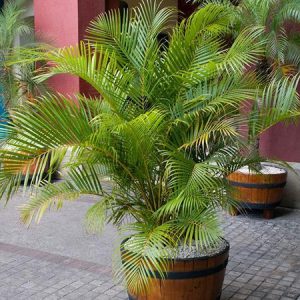
The Areca palm makes bold attempts to grow farther north than any other palm before because it does well in pots and low light conditions.
You can simply plant the Areca Palms in containers and bring them indoors during the colder months if you live outside of the palm’s recommended growing zone.
- This species thrives in low light conditions.
- Because Areca Palms filter and clean the air, you will breathe easy.
- There are white flowers that open to reveal bright orange ornamental fruits.
Areca palms flourish in pots and low light conditions, so they can grow further north than any other palm has before.
Areca Palms do well in containers and can be brought inside during the colder months if you live outside of their recommended growing zones.
The air inside your home will be clean and fresh because Areca Palms filter the air. Air filters remove pollutants and irritants from dry, stale air while pumping out fresh, clean and humid oxygen. Its stems are covered in lush, dark green leaf blades that give any room a tropical feel.
Mediterranean Fan Palm Tree
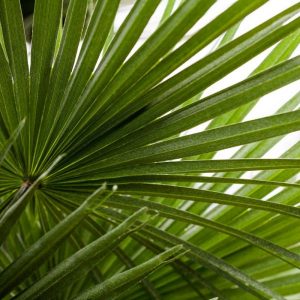
The Mediterranean Fan Palm is among the most versatile and ornamental of all palms.
The palm tree is even cold-tolerant, and is in fact one of the hardiest you will find.
Plant a specimen of this tree in your front yard or on a walkway for a distinctive welcome to your home.
Think about using Fan Palms as container plants on your patio in which some subtle back-lighting would highlight their gently swaying fronds and the unique shadow patterns they produce.
Adding this palm to your home will give it a tropical and restful feel.
You can leave your Mediterranean Fan Palm to grow naturally in a shrub-like fashion as it is a multi-trunked palm. Many prefer to prune it into a bundle-like appearance that highlights the rough-hewn, tropical trunk that palms are known for.
Cardboard Palm Tree
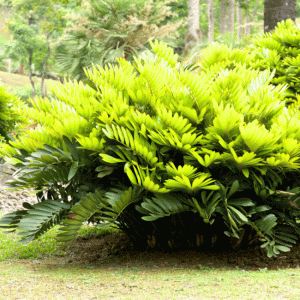
This is a Palm Tree with a modern, unique twist – close-growing foliage and lush green leaves separate the Cardboard Palm Tree from other varieties.
You can also enjoy the benefits of their ability to survive and thrive indoors, so you can get a taste of island-inspired growth right at home.
In addition, Cardboard Palms grow slowly and are tolerant of neglect. It doesn’t matter if you don’t have a green thumb.
The Cardboard’s manageable habit and minimal maintenance make it ideal for planting anywhere, from patio borders to your favorite container inside.

